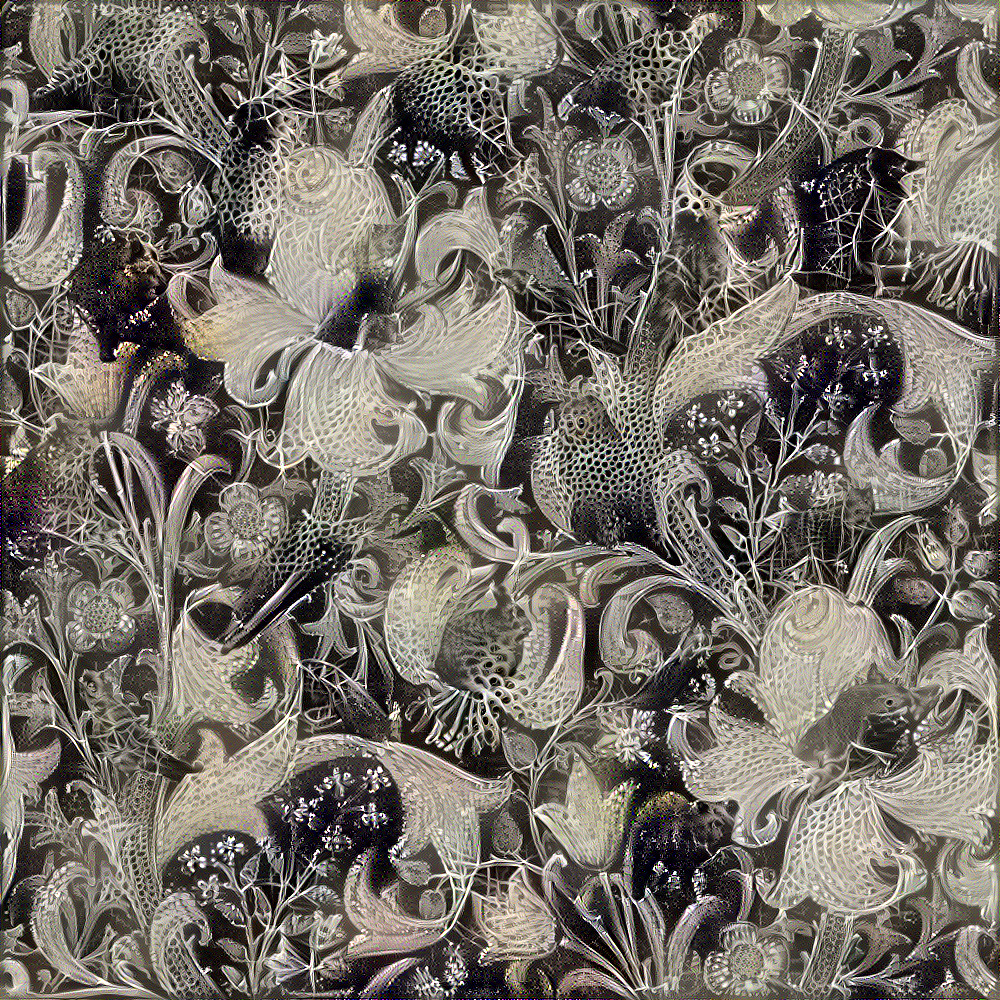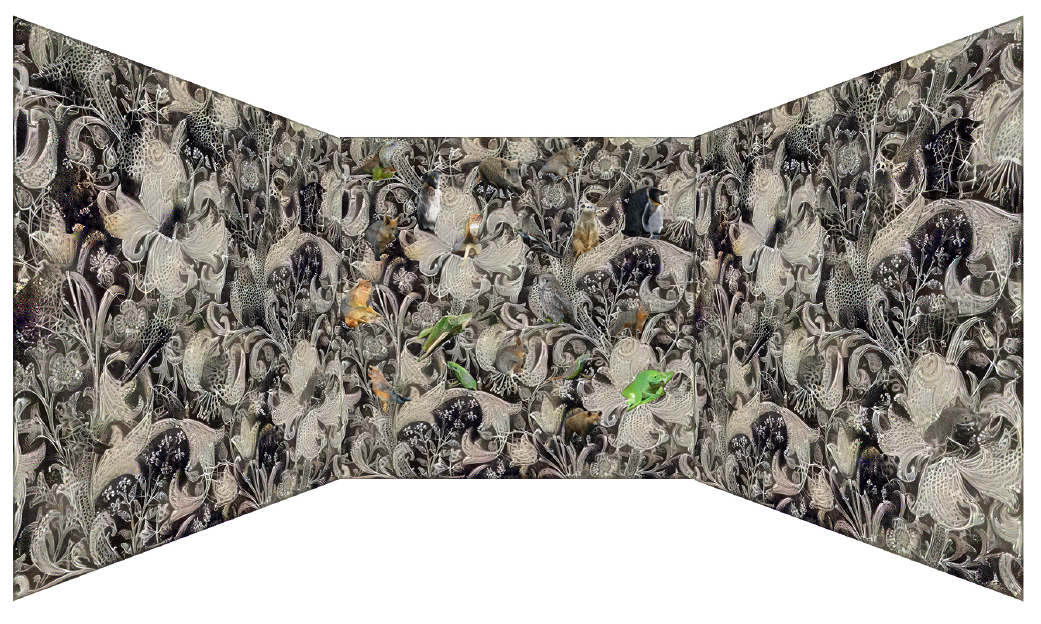Wunderkammer X Genesis
an AI-generated curiosity cabinet, video projection , 2019
Wunderkammer X Genesis is a mixed media installation where the natural curiosities exhibited in a virtual cabinet of rarities are generated through AI. Aim of the installation is to create awareness of the present mass extinction of species and the question of the ultimate purpose of all creation and its organisation.
The natural curiosities for the Wunderkammer are created using Neural networks (GANs). The curated resulting species are being projected, shaping the Wunderkammer. While immersed in the installation, the visitor gains additional information about the individual species, such as their Latin name, their usual habitat, their breeding habits plus their level of extinction through augmentation. In the background of the installation the visitor can hear extracts of Darwin’s Origin of Species and Turing’s Lecture to the London Mathematical Society on 20th February 1947 about the automatic computing engine.
In computer science algorithms, such as those, modelling neural networks in the brain, are used to understand how learning works. Evolution can evolve to get better at evolving in exactly the same way that a neural network can learn to be a better problem solver with experience. Evolution can get better at evolving over time. The idea is known as the evolution of evolvability. Evolvability, simply the ability to evolve, depends on appropriate variation, selection and heredity – Darwin’s cornerstones.
Allen Turing, father of computer science and artificial intelligence just like Darwin, broke down the mystery of intelligence (or Intelligent Design) into what “we might call atomic steps of dumb happenstance, which, when accumulated by the millions, added up to a sort of pseudo-intelligence.” (Dennett)
“Wunderkammer X Genesis” is a presentation of the parallel concepts of evolution of intelligence by Darwin and Turing. It also picks up on the current debates about Artificial Intelligence as a threat to humanity and a promise.
The project was presented at Mediasphere for Nature in the Naturkundemuseum Berlin.
using conditional adversarial network Pix2Pix to generate shapes of liveforms by dawing an outline


concept for projection walls